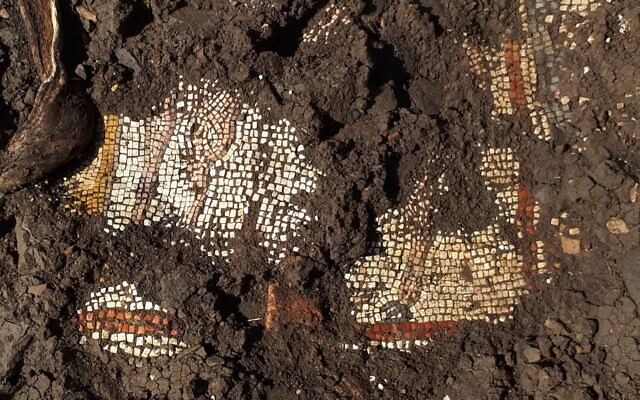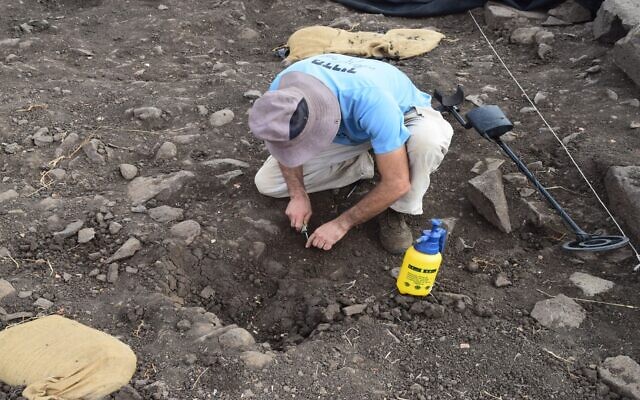
JERUSALEM (VINnews) – Rainbow tiles in a black basalt-stone synagogue tell the story of a little-known but thriving Jewish community in the far north of Israel. The remains of mosaics from a 3rd century synagogue in the town of Majdulia are the earliest evidence that Jewish people of the past decorated their synagogue.
Join our WhatsApp groupSubscribe to our Daily Roundup Email
The University of Hafia released a press release on Monday detailing how these mosaics were found.
During the same time that the Second Temple of the 1st Century CE was falling the town of Majdulia was being built. Scholars had originally thought that there weren’t many Jewish people around this area during this time period after the fall of the fall of Gamla — the Masada of the north — in 67 CE.
The discovery of the mosaics disproves that, while also proving that the Jewish community thrived and valued the importance of decorating their space.
“Our findings are among the earliest that have yet been uncovered that bear witness that already in the 3rd century, synagogues were beginning to undergo a conscious transformation,” said Dr. Mechael Osband, the excavation director, in a press release.
Animal legs and other portions of intricate designs were also found in the temple. It is possible that there was a deliberate dismantling of the decorations, due to the fact that there are no complete images, according to the press release.

The archeologists believe the community was trying to change the more typical drab study hall into a livelier public hall. The somber study hall would’ve been typical of the early Roman time period.
“In the 3rd century CE, we see an interesting mix of the continuation of a tradition from Second Temple synagogues — for example the seating arrangement — and the tradition of a relatively unadorned architectural style, with the addition of some new elements that with time became common in synagogues, such as colorful mosaics including animals,” said Osband.
Osband began excavating Khirbet Majdulia, near today’s settlement of Natur, in 2014. He is a member of the Department of Land of Israel Studies, Ohalo College, and the University of Haifa’s Zinman Institute of Archaeology. Hebrew University’s Dr. Benjamin Arubas recently joined him on the project. Osband made headlines in 2014 for his discovery of the Roman-period synagogue that was abandoned in 350 CE. There weren’t many similar prayer houses in the Golan nor Israel in general, so Osband’s discovery was exciting news.
“We know that synagogues at the end of the Second Temple period were largely used as places in which to learn Torah. Synagogues at the end of the Roman era, and especially during the Byzantine era, were used as prayer halls, a sort-of ‘Mini-Temple,’ and as such they are much more luxurious, and it is not unusual to find ornate mosaics,” said Osband.
During his search Osband discovered some remnants believed to be from the Hellenistic era, but most of the artifacts are believed to be form the Roman era. A potter’s kiln was also discovered. It is the first one to be uncovered from this era. Olive presses were also found.
Archeologists didn’t think they would ever find still extant items, and therefore didn’t put the time and effort into looking for them. The mosaic had truly been destroyed, so they saw no reason to look until this past excavation season. Osband gives masters student Shalom Ariel’s patience the credit for finding the evidence of the Jewish communal shift.
